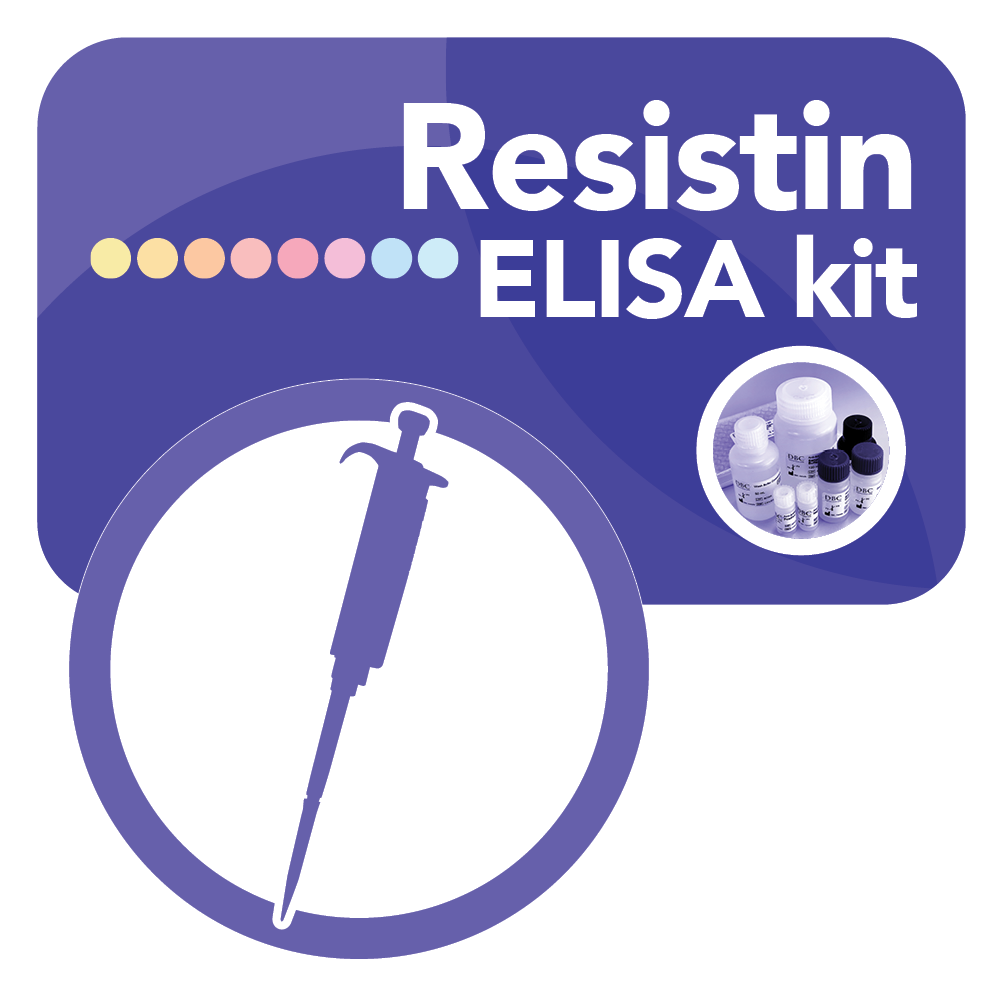
- CAN:

- EU:


- USA: For Research Use Only. Not For Use In Diagnostic Procedures.
Resistin is a 12.5 kDa protein containing 108 amino acids. It is synthesised as a pre-peptide and its hydrophobic signal peptide is cleaved before secretion. Resistin circulates in human blood as a dimeric protein consisting of two 92 amino acid polypeptides that are linked by a disulfide bridge.
Resistin belongs to the resistin-like molecule (RELM) hormone family. The RELM family comprises RELM-α, RELM-β, RELM-γ and resistin. RELM-β is related to resistin and is expressed in the colon. In rodents, resistin is produced by adipose tissue and is a significant regulator of glucose metabolism and insulin sensitivity. Hyperresistinemia in rodents causes insulin resistance and predisposition to type 2 diabetes. In humans, resistin is produced by the macrophages, which stimulates the macrophage secretion of pro-inflammatrory cytokines. Some studies have shown a correlation between increased serum resistin levels and atherosclerosis. Another study shows an increase of resistin levels in mice with atherosclerotic lesions. Many studies have tried to translate the mouse data to humans by answering the question whether levels of resistin are increased in human obesity, insulin resistance, and/or type 2 diabetes. Some groups failed to identify changes in resistin levels with obesity, insulin resistance, or type 2 diabetes while other studies that used diverse populations and different assays, have found significant relationships with one or more of these conditions.
Based on the above studies resistin may be a biomarker and a mediator of metabolic and inflammatory diseases. Many areas of resistin physiology remain to be investigated to determine if it can be used as a marker for energy metabolism and body weight regulation, metabolic syndrome, inflammation and atherosclerosis.
